 Growing vegetables is a difficult, but interesting business. For some, this is a hobby, and for others, a profession. The first point in planting plants is the selection of seed material. To make a choice, consider what a hybrid is, a pure variety, which varieties of sweet pepper are rightly called the best.
Growing vegetables is a difficult, but interesting business. For some, this is a hobby, and for others, a profession. The first point in planting plants is the selection of seed material. To make a choice, consider what a hybrid is, a pure variety, which varieties of sweet pepper are rightly called the best.
Content
Hybrid or variety: which is better?
To understand which is better, a pure variety or hybrid, you need to consider the concepts themselves and their advantages and disadvantages.
A hybrid is a plant variety that is the result of crossing several varieties to improve taste, appearance, increase productivity. Seeds collected from hybrids do not convey the qualities that are inherent in the parent set. On sachets of seeds, the hybrid is indicated as F1.
A pure variety is the name of a group of plants with a characteristic set of qualities. Each variety, from a certain group of plants, is similar to each other, but has its own distinctive features. Seeds of varieties retain a set of qualities of parents, they can be planted from year to year, no changes will occur.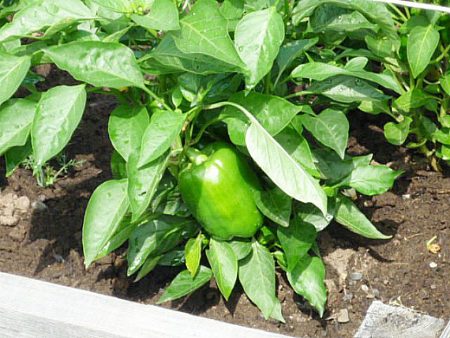
Hybrid Benefits:
- ideal external parameters of the fruit;
- high level of productivity;
- disease resistance;
- self-pollination.
The disadvantages of the hybrid:
- it is necessary to create favorable conditions for the plant (optimal temperature, regular feeding, monitor the absence of weeds);
- seeds from the fruit will not bear fruit the next year.
Advantages of pure varieties:
- for the variety, unpretentiousness in care is observed;
- the fruits are saturated with vitamins;
- the taste of the fruit is juicy, pleasant;
- Tolerate various weather conditions.
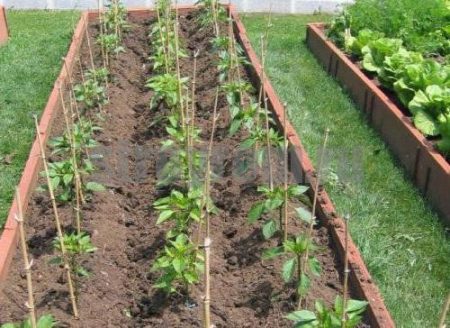
Minuses:
- varietal plants are pollinated by bees, sometimes, this brings inconvenience, because you have to do pollination yourself;
- it is difficult to collect seeds from plants with cross-pollination, the primary characteristics of the variety are lost.
On an industrial scale, they prefer to grow hybrids, as they have excellent presentation, stability, excellent yield, despite the fact that they need to create favorable conditions. Varietal plants are popular among households, where their taste, usefulness and unpretentiousness are appreciated. To understand exactly which plant group is closer to you, buy hybrid seeds and a pure variety and conduct an experiment.
Recommended varieties of pepper for planting in exhaust gas and greenhouse
Pepper is a vegetable high in healthy vitamins. It is grown in small summer cottages, in greenhouse hangars, in the fields. The most common in Russia was bell pepper.
Apricot favorite
Appreciate the "Apricot favorite" for unpretentiousness. The full vegetative period of the plant is 90-100 days. Peppers are planted in open ground, greenhouses. Bushes grow no more than 60 cm, they are neat, staff.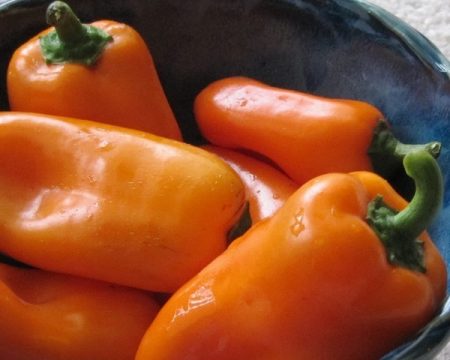
The shape of the peppers is conical. The technical color of the fruit is light green, in full biological ripeness of orange color. Walls of pulp from 5 to 7 mm. The weight of one peppercorn is 100-150 g. Up to 20 fruits ripen on the bush. On 1 m² 4-6 plants are placed. "Apricot favorite" is sweet, suitable for canned food, side dishes.
The main benefits of pepper are:
- fleshy walls of the fruit;
- early ripening;
- resistant to various viruses and bacteria;
- can be grown on exhaust gas, hotbeds;
- pleasant taste.
The disadvantage is that you need to water the pepper with warm water.
Agapovsky
By the fruit ripening period, Agapovsky pepper belongs to the early varieties, 100-105 days. Breeders from Russia tried to develop the presented variety. Bushes are leafy, neat. Bushes grow to a level of 50-70 cm.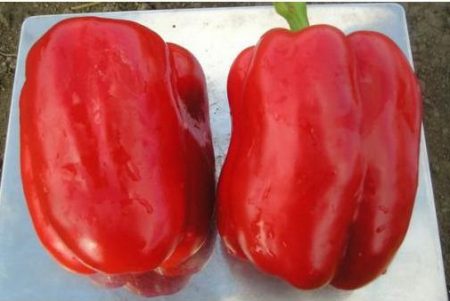
The fruits are scarlet. Prismatic shape, with protruding ribs. Walls of pepper 6-7 mm thick. According to the statistics of various farmers, the mass of one fruit is 100-120 g. The crop per square meter is 9-11 kg. Planted in greenhouses, exhaust gas. Advantages of Agapovsky:
- shows resistance to many diseases;
- appreciated for high yields;
- excellent taste of pepper;
- contains a high concentration of beneficial trace elements.
The downside is the appearance of vertex rot when the air temperature is low enough and the humidity is high.
Orange
Crop with 1 m² is 7 kg. The fruits are not in vain called “Orange”, because their color is a deep orange hue. Pepper of small weight, only 40-50 grams. On one plant, an average of 20-30 fruits are formed. Plant height 40-50 cm. Walls 4-5 mm thick. The advantages of the variety are: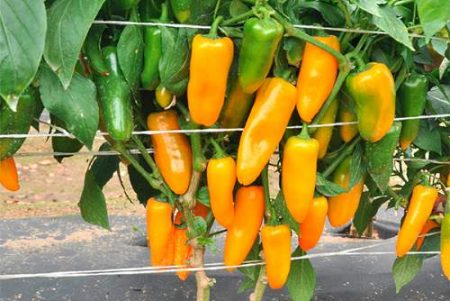
- high concentration of carotene in the peel;
- the plant is practically not sick;
- no need to tie to pegs;
- pick fruits very early.
It is possible to grow a variety in the central and northwestern regions of the country.
California Miracle
The California Miracle needs to be planted and raised in a greenhouse. Small bushes will please you, their height can only reach 60-70 cm. The foliage is high. On one plant, 8-10 fruits are formed immediately. The shape of the pepper is cuboid. Fully ripe red peppers. Weight is an average of 80-150 grams. The taste is sweet, even when they are in technical ripeness.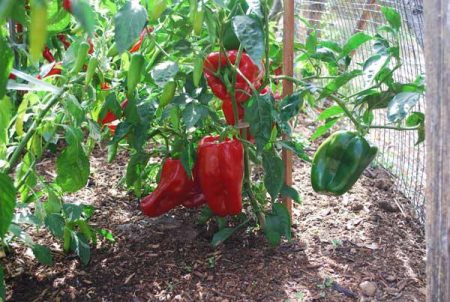
The plant is resistant to verticillosis and TB (tobacco mosaic). They are an ingredient in various dishes. In the Russian Federation officially registered in 1999. Pepper has an average maturity.
Hybrids pepper
Some of the best hybrids of sweet pepper are the varieties: Kakadu and Isabella.
Hybrid of sweet pepper "Cockatoo" F1
Mid-season hybrid variety "Cockatoo" is not in vain received such a name, because its fruits resemble the beak of a beautiful cockatoo bird. They are grown in closed soil, since the plant is demanding on temperature conditions. The period of full ripening is 120-130 days.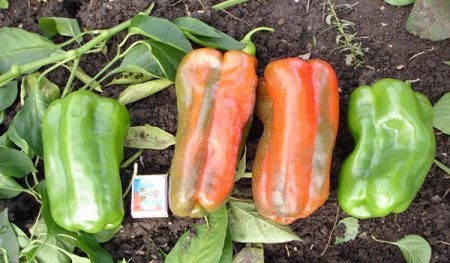
Bushes tall 0.9-1.6 m. You need to tie peppers to the support. The fruits are elongated, resembling a cone. The fruits are painted bright red. A hybrid stands out with a mass of fruits, it averages 300-400 grams. Walls of pepper 6-8 mm. From one bush, subject to proper agricultural practices and good care, it will be 2.5-3 kg. "Cockatoo" is perfect for preparing lecho, canning and cooking fresh salads.
Isabella F1 Sweet Pepper Hybrid
Isabella is a hybrid with high yields. Recommended to grow in closed soil. The bushes are tall, you will need a garter to the support. On one plant, 15-20 fruits are tied at the same time. The pulp is massive 7-10 mm.
Ripe cuboid vegetables with protruding ribs. The weight of one pepper reaches 90-140 grams. Peppers are painted red. Full-fledged fruits grow on 120-125 days. Valued for keeping quality, excellent presentation, transportability.
Rules for growing sweet pepper
We grow seedlings:
- it is recommended to treat purchased or collected seeds before planting in the ground with the Epin growth stimulator. You will need 100 ml. water and 4-6 drops of the drug. Soak for 20-24 hours. It will increase the resistance of the young plant and accelerate its development;
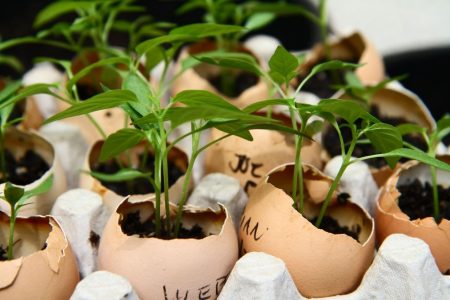
- soil for planting seeds should be disinfected and fertilized. It is best to use special soil that is already fertilized and disinfected. You can prepare the soil yourself. To do this, mix a bucket of garden soil, add 2 buckets of peat, 1 bucket of stale sawdust.Mix all elements well and place in the greenhouse;
- seeds are planted to a depth of 1 cm. The soil under the seeds should be slightly compacted. Water them with warm water. The temperature in the greenhouse is +25 degrees during the day and +18 at night. Humidity should be between 60-65%. The first sprouts appear on the 7-10th day, it all depends on the variety;
- The first top dressing of seedlings is made upon the appearance of the first leaves. To prepare the solution you will need: 1 l. warm water, 0.5 g of ammonium nitrate, 3 g of superphosphate and 1 g of potassium. The second top dressing is carried out after 15 days after the first, the composition is the same, only the dose of fertilizers is doubled;
Transplant into a greenhouse or exhaust gas:
- after 40-70 days, seedlings can be transplanted into open or closed soil. Before planting in open ground, young plants must be hardened. To do this, it is necessary to gradually reduce the air temperature in the greenhouse and create small drafts 10-15 days before the proposed planting.
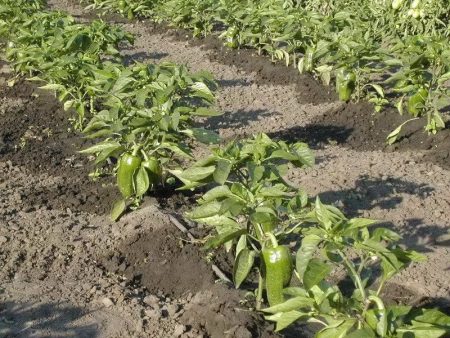
- the wells must be fertilized with stale manure and ash before transplantation. Seedlings are planted in late May and early June, as the plants do not withstand frosts. It is best to plant pepper in the evening so that it can adapt a little during the night;
Sweet pepper care.
- sweet pepper care is divided into greenhouse, and in open ground. Pepper is a heat-loving plant, so it is better to grow it in closed soil;
- it is necessary to water pepper once a week, if the climate is not very hot, if hot, then you should monitor the drying of the soil. A plant does not like drought, if it does not have enough moisture, gray rot appears on the leaves, the flowers dry and fall;
- tall varieties of pepper must be tied to a support, so if you do not want to additionally devote time to this process, choose low-growing, staff plants;
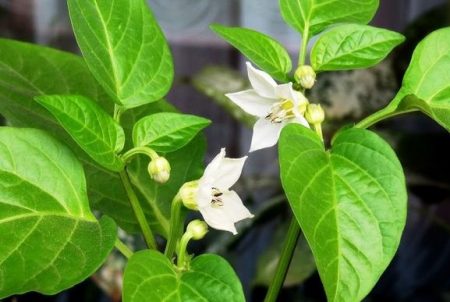
- it is necessary to loosen and weed the soil under the plants. Weeding is necessary to remove weeds, and loosening to saturate the root system with oxygen;
- periodically monitor the condition of plants, the appearance of pests.
The best varieties of pepper for open ground
- "Funtik" is included in the group of early varieties for planting in the exhaust gas. Ripe vegetables become 125-129 days after the sprouts hatch from the ground. It grows 0.5-0.7 m. Bushes are leafy. Ripe fruits are red, weight 0.14-0.18 kg. Prismatic vegetables grow. Pepper is not subjected to verticillosis and mosaic. According to data obtained over several years of planting this pepper, the crop is 5.5-7.2 kg per square meter of plantings.
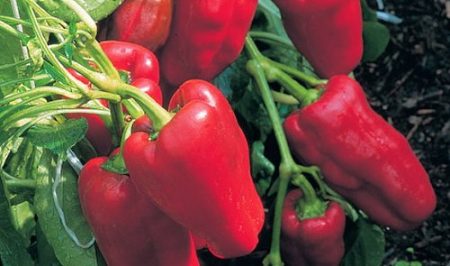
- "Chardash" is a productive variety. The full vegetation cycle occurs in 105-128 days. Bushes are determinant, up to 70 cm high. One fruit weighs 100-200 g. Wall thickness 5-6 mm., Color orange with red tints. Various farmland was collected on average per square meter of 8-10 kg. Tied at the same time up to 20 peppers on the bush.
- "Barguzin" - suitable for planting in open ground. Fruits reach a mass of 170-200 grams. Ripe vegetables are harvested on 120-130 days from seedling emergence. It has a high resistance to the tobacco mosaic virus. The color of the fruit may be light green or yellow. Pepper pericarp on average reaches 5-6 mm. The height of the bushes reaches 0.8-1 m.
- "Cornet" - an early ripe vegetable with a period of biological maturity of the fruit 120-138 days. Bushes are vigorous, but leafy. The plant is semi-determinant. Prismatic pepper, weight 150-220 g. Ripe fruits, unusual for pepper, brown. Wall thickness 5-7 mm. It is appreciated for the high degree of fruit setting and resistance to tobacco mosaic.
- "Accord" is a type of sweet pepper with yield indicators of 7-10 kg. per m². The color of the technical ripeness of the fruits is green, and in biological ripeness they acquire a red tint. Cone-shaped fruits reach a mass of 160-190 grams. Plant height 0.7-1 m.
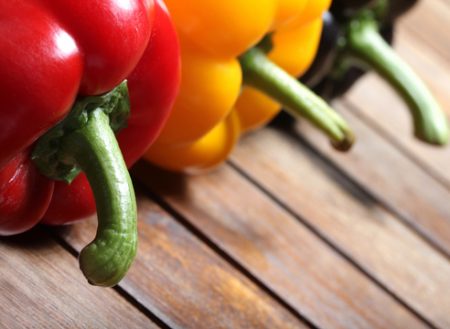
- "Pinocchio" - represents a group of first-generation hybrids F1. Pepper fruits grow cone-shaped, their length is 12-15 cm. The height of the bushes is 70-100 cm. Ripe red peppers.Fruits for long storage and transportability are appreciated. The average weight is 80-120 grams. Pericarp of ripe fruits 4-5 mm.
- “Junga” - early ripe pepper, ripeness of vegetable culture occurs on 122-132 days from the moment of seeds hatching on the surface of the earth. Bushes are stunted, 0.5-0.6 m. The mass of fruits is 130-180 grams. The thickness of the walls of the pulp is 5-7 mm. At the same time 10-14 fruits are formed. In biological ripeness, red pepper. Planted on 1 m² up to 8 plants. Pepper is unpretentious in leaving.
- "Lyceum" - an early ripe crop of pepper with semi-determinant bushes. The plant reaches a height of 0.7-1.5 m., A garter may be required. The average weight of fruits is 250-300 grams. Walls of ripe fruits of 6-7 mm. The color of peppers in biological ripeness is bright red. On one bush, 30-35 fruits are formed.
- Bagration - a delicious medium-yielding variety, 5-7 kg per m². Technically ripe fruits are already on the 100th day. Bushes are leafy, 0.8-1 m high. Outwardly, the fruits of pepper resemble a yellow tomato. The shape is prism-round. Ripe vegetables are sunny yellow. Weight an average of 150-200 grams.
- "Smile" - pepper, which is appreciated for the friendly formation of fruits in the period of 120 days. The mass of pepper reaches 180-250 grams. The shape of the pepper is conical. On one bush, up to 25 fruits are formed immediately. Tobacco mosaic doesn’t matter to the plant. You can eat when the fruits are still green, but they are already sweet.
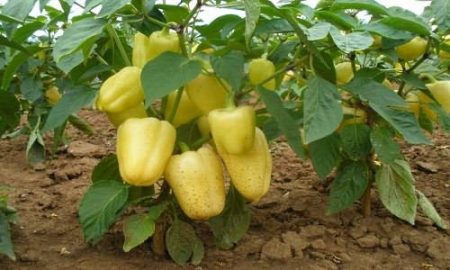
- "Nafanya" - an early grade of pepper with resistance to adverse conditions. The bushes grow compact, upright, 70-120 cm high. Fruits on 120-130 days are formed by a mass of 140-170 grams, red. The shape of the pepper resembles a trihedral cone 11-12 cm long. It stands out among the other varieties by continuous growth and flowering.
- "Tornado" - medium-sized peppers with a height of 50-90 cm., Ripening 125 days. Bushes are semi-determinant. The fruit mass is 80-160 grams with a length of 7-10 cm. The fruits are red, the thickness of the pericarp is 6-7 mm. The load on one bush is 20-30 fruits. As you grow, you will need a garter to the support.
- “Znayka” - the variety bears fruit for 100-140 days after seed germination. Bushes semi-determinant type, erect with medium leafiness. The height of the plant can reach up to 1 m. The fruits are fleshy, the shape is round-prismatic. The mass of one pepper reaches 160-250 grams. The color of the pepper is red. Pepper is appreciated for its portability and high palatability.
- “Lumina” - is grown in any region, since it is practically independent of weather conditions. The fruits are medium, their weight reaches 80-110 grams. The skin is white with a green or pink tint. The walls of the fruit are 5-6 mm. Possible long-term storage of fruits and transportation over long distances.
- Aivengo is an excellent variety for growing on open soil. Fruits in technical ripeness can already be observed after 100 days from germination. Pepper weighs an average of 90-130 grams, the color of vegetables is red.
https://youtu.be/yErIlfbMpSE
- “Marinkin Tongue” - sweet pepper with resistance to adverse changes in weather conditions. Bushes are small 50-70 cm. At the same time, 15-20 fruits are formed on one bush. The average weight of pepper is 200 grams. Stored for a long time.
- "Triton" - pepper of this variety has a high yield rate from 1 m², 9-11 kg. The mass of fruits is 100-120 g. The elongated fruits are similar to an amphibian newt. Disease resistant. In technical ripeness, the fruits are light green in color, and in biological ripeness, they are red.
- "Eroshka" - a variety with early harvest, 120-130 days from hatching seeds. The bushes are neat, small, the height of one is on average 0.3-0.5 m. The fruits are 120-180 grams with a pericarp thickness of 5-6 mm. On one bush, a load is formed from 10-16 fruits.
Each of the presented varieties is similar to each other, but at the same time, each pepper is unique.




 Calorie pepper stuffed with meat and rice - BZHU per 100 grams
Calorie pepper stuffed with meat and rice - BZHU per 100 grams Gorky pepper - the best varieties for open ground
Gorky pepper - the best varieties for open ground Hot pepper seeds - the best varieties for open ground and reviews
Hot pepper seeds - the best varieties for open ground and reviews Capsicum tincture for hair - how to use and reviews
Capsicum tincture for hair - how to use and reviews